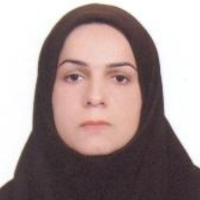Determination of bacterial quality of water in Nesarud and Kheyrud rivers of Mazandaran province at the time of release of productive white fish
Nesarud and Kheyrud rivers are important rivers in Mazandaran province that are important in terms of having special populations of fish, spawning of migratory species and feeding of estuarine fish. The aim of this study was to evaluate the microbial quality of water in Nesarud (shilling) and Kheyroud (natural reproduction) rivers from April to August 2018 and microbial factors including total bacteria, total coliform, fecal coliform and fecal streptococcus were evaluated. For this purpose, 4 stations along the route of Nesarud and Kheyrud rivers were selected and monthly for sampling of river water was performed for 4 months (April, May, July and August). Based on the obtained results, the maximum changes in the average total bacterial count of Nesarud (20250 CFU/ml) and Kheyrud (21250 CFU/ml) were achieved in May and the maximum changes in the average total coliform of Nesarud (45 CFU/ml) per month. May and Kheyrud (50 CFU/ml) were reported in April and the range of mean changes in fecal coliforms in different months in Nesarud rivers (10 CFU/ml) in May and Kheyrud (8.5 CFU/ml) per month April was variable. According to studies, the water quality of the Nesarud and Kheyrud rivers is suitable for shill formation and natural reproduction in terms of bacterial indices and the number of bacteria was in the standard range.
-
Antioxidant and antibacterial activities of the polysaccharides extracted from Chlorella vulgaris in vitro
*, Reza Safari
Iranian Scientific Fisheries Journal, -
Study of the antiviral activity of bioactive peptides extracted from black sea cucumber (Holothuria leucospilota) against Herpes simplex (types 1 and 2), Chikungunya, and Dengue viruses
Reza Safari*, , Hadi Ghaffari, Soheyl Reyhani Poul
Iranian Scientific Fisheries Journal,


